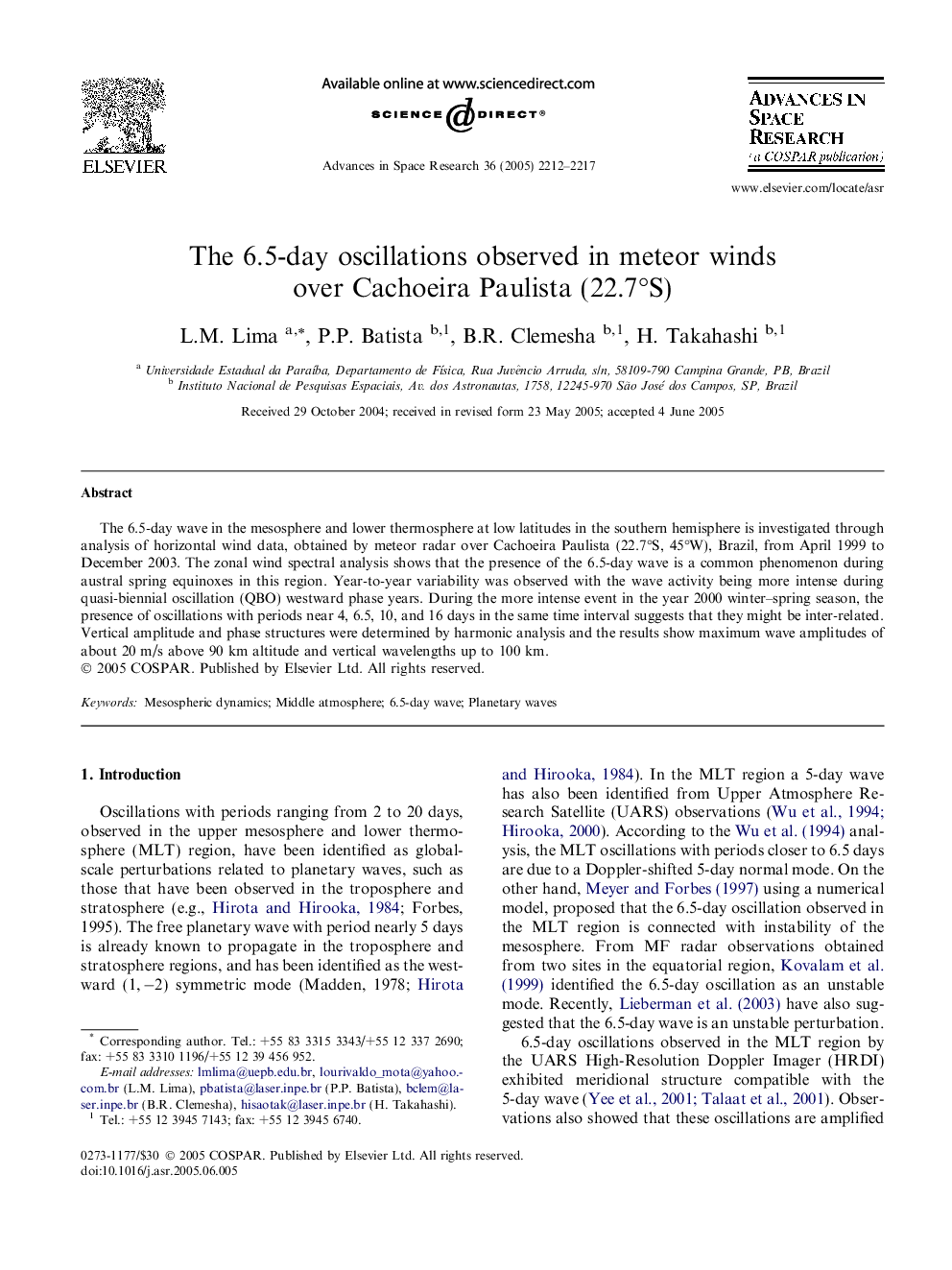| Article ID | Journal | Published Year | Pages | File Type |
|---|---|---|---|---|
| 1769591 | Advances in Space Research | 2005 | 6 Pages |
The 6.5-day wave in the mesosphere and lower thermosphere at low latitudes in the southern hemisphere is investigated through analysis of horizontal wind data, obtained by meteor radar over Cachoeira Paulista (22.7°S, 45°W), Brazil, from April 1999 to December 2003. The zonal wind spectral analysis shows that the presence of the 6.5-day wave is a common phenomenon during austral spring equinoxes in this region. Year-to-year variability was observed with the wave activity being more intense during quasi-biennial oscillation (QBO) westward phase years. During the more intense event in the year 2000 winter–spring season, the presence of oscillations with periods near 4, 6.5, 10, and 16 days in the same time interval suggests that they might be inter-related. Vertical amplitude and phase structures were determined by harmonic analysis and the results show maximum wave amplitudes of about 20 m/s above 90 km altitude and vertical wavelengths up to 100 km.
